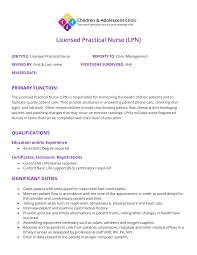
You may be wondering what to study for to become a doctor. There are so many different options out there, and the medical field is one of the fastest-growing and most in-demand. Below is an overview of the many fields available and the education required. The list below shows the job outlook and salary range for each career path. Read on to learn more about the medical field! You'll be glad that it was.
Job outlook
As the Baby Boomer generation retires, healthcare professionals will be in high demand. By 2034, the number of elderly people will outnumber children in the United States. Healthcare professionals are in good shape with 14% expected growth between 2018-2028. Medical professionals have a bright future, though it is not as bright as other careers. These are the pros and con's of medical careers.
One of the greatest benefits of a career in the medical field is its convenience. You can find a medical career anywhere depending on your location, including hospitals and doctors' offices. Moreover, programs tend to be shorter than degrees, so it is more affordable to enroll in them. Many medical careers can also be done online, which makes them more accessible for people who don't live in the state. This way, students can complete their coursework at a time that works for them.
Education is required
A doctorate is required in medicine (M.D.). To become a licensed doctor in a particular specialty, you will need to have a doctorate in medicine (M.D.). Medical school applicants must have completed college coursework in the sciences, and specific requirements vary by institution. American Medical Association recommends applicants have a minimum grade point average (GPA) of 3+/4 on the 4-point scale. To practice medicine in their state, applicants must also pass the Medical College Admissions Test.

Students can also earn certificates or degrees during school in medical education. Some of these courses may require a master's degree. These courses can often be done alongside a job so it is possible to be flexible. Foundation schools also offer training in medical education. If you are interested in this field, be sure to research current opportunities in medical education. Below are the top-rated degrees for those who wish to study medicine.
Salary range
More people are choosing to work in medical fields than ever before. Healthcare careers are growing in popularity due to the aging population and new technologies. The following is a breakdown of the salary range for medical careers. In general, more experience means more money. But, you must consider other factors when comparing different salary ranges for medical jobs. Learn more about the various options in this field so you can choose the best one for yourself.
The highest salary for medical careers goes to advanced practice nurses (APNs). These professionals are often trained in mammography, CT and MRI. These professionals can earn between $22,490 and $42,084 annually. Locum tenens specialists often make 30% more than employed doctors. These positions often require postsecondary education. A bachelor's degree will usually be required.
Requirements
A rigorous academic program is required to be a doctor. Students must maintain a high undergraduate grade-point average and score well on the Medical College Admissions Test. Their first year of medical school is dedicated to lectures about basic medical science, while their second-year classes focus on disease symptoms and treatment options. Students serve as core medical teams in their third-year rotations at hospitals. Students then choose their specialty.

Besides a bachelor's degree and four to five years of schooling, many high-paying, high-status jobs in healthcare require graduate education. Graduate training opens the doors to careers in public health and speech pathology. Most schools will require standardized tests to determine eligibility. Graduate Record Examination or Graduate Management Admissions Test (GMAT) are two such tests that many schools accept. These programs are subject to different requirements, depending on the industry. But most positions require at least a bachelor's degree.
FAQ
What should I eat?
You should eat lots of vegetables and fruits. They provide vitamins and minerals to keep your immune system strong. Also, fruits and vegetables are rich in fiber. This makes them filling as well as helping with digestion. At least five servings of fruits and vegetables should be consumed each day.
Water is essential for your body. Water helps flush toxins out of your body and makes you feel fuller between meals. Drink about eight glasses each day.
Eat whole grains instead of refined ones. Whole grains retain all nutrients including B vitamins, iron and zinc as well as calcium, magnesium, calcium, protein, and magnesium. Refined grains have been stripped of some of their nutrition.
Avoid sugary drinks. Sugary drinks have empty calories and are a major contributor to obesity. Instead, choose water, milk, and unsweetened tea.
Avoid fast food. Fast food is low in nutritional value. Although it may taste delicious, fast food won't provide you with the energy you need for your daily activities. Avoid soups, sandwiches and other unhealthy options.
Reduce your alcohol intake. Alcohol contains empty calories and contributes to poor nutrition. Limit yourself to no more than two alcoholic beverages a week.
Red meat should be cut down. Red meats have high levels of cholesterol and saturated fat. Choose lean cuts such as beef, pork and lamb, chicken, fish, or turkey.
Why does weight change as we age?
How do you determine if your bodyweight is changing?
If there are less calories than muscle mass, then weight loss is possible. This means that daily energy needs must be greater than the calories consumed. Activity levels are the most common reason for weight loss. Other reasons include poor eating habits, stress, hormone imbalances, certain medications and illness. Weight gain occurs when there is more fat than muscle mass. It happens when people eat more calories than they use during a given day. Overeating, increased physical activity and hormonal changes are all common reasons.
Our bodies lose weight because we eat fewer calories than we burn. Exercise regularly increases your metabolism rate, which allows you to burn more calories every day. This doesn't necessarily mean we will lose weight. What matters is whether we are losing fat or building muscle. We will lose weight if we burn more calories than we consume. If we consume more calories that we burn, we are actually storing them in fat.
As we age, our ability to move around is slower and we are less mobile. We also tend to consume less food than when we were younger. Also, we are more likely to gain weight. However, our muscle mass is more important than we realize and makes us appear larger.
There's no way to tell how much weight you've lost unless you weigh yourself every week. There are many ways you can measure your weight. There are many ways to measure your weight. You can check your waist, hips, thighs, arms and legs. Some people prefer using bathroom scales and others prefer tape measure.
For a better track of your progress, try to weigh yourself once per week and measure your waistline once every month. To see how far you have come, you can take photos of yourself every few month.
You can also find out how much you weigh by looking up your height and weight online. If you're 5'10' tall and weigh 180lbs, you'd likely weigh 180lbs.
What are the 7 best tips to lead a healthy, happy life?
-
Take care of your health
-
Exercise regularly
-
Rest well
-
Get plenty of water.
-
Get enough sleep
-
Be happy
-
Smile often
Statistics
- Extra virgin olive oil may benefit heart health, as people who consume it have a lower risk for dying from heart attacks and strokes according to some evidence (57Trusted Source (healthline.com)
- nutrients.[17]X Research sourceWhole grains to try include: 100% whole wheat pasta and bread, brown rice, whole grain oats, farro, millet, quinoa, and barley. (wikihow.com)
- According to the 2020 Dietary Guidelines for Americans, a balanced diet high in fruits and vegetables, lean protein, low-fat dairy and whole grains is needed for optimal energy. (mayoclinichealthsystem.org)
- This article received 11 testimonials and 86% of readers who voted found it helpful, earning it our reader-approved status. (wikihow.com)
External Links
How To
What does the "vitamins” word mean?
Vitamins are organic compounds naturally found in food. Vitamins help us absorb nutrients from foods we eat. Vitamins cannot be made by the body; they must be taken from food.
There are two types of vitamins: water soluble and fat soluble. Water-soluble vitamins dissolve easily when they are dissolved in water. Vitamin C,B1(thiamine), B2 (2riboflavin), and B3 (3niacin), as well as vitamin C,B1, B2 (riboflavin), and B3 (niacin), vitamin B6 (pyridoxine), vitamin folic acid (biotin), pantothenic, and choline are examples. Fat-soluble vitamins can be stored in the liver or in fatty tissue. You can find vitamin D, E K, A, beta carotene, and other fat-soluble vitamins.
Vitamins are classified according to their biological activity. There are eight major groups of vitamins:
-
A - essential for normal growth and maintenance of health.
-
C – essential for proper nerve function.
-
D - Vital for healthy bones and teeth
-
E - Required for good vision & reproduction
-
K - Essential for healthy muscles and nerves.
-
P – vital for building strong bones.
-
Q - Aids in digestion and absorption.
-
R is required for the production of red blood cells.
The recommended daily allowance for vitamins (RDA) varies based on gender, age, and physical conditions. The U.S. Food and Drug Administration (FDA) sets the RDA values.
For example, the RDA for vitamin A is 400 micrograms per dayfor adults 19 years or older. For fetal development, pregnant women need 600 mg per day. Children ages 1-8 require 900 micrograms per day. Infants under one year of age require 700 micrograms per day, but this amount decreases to 500 micrograms per day between 9 months and 12 months of age.
Children between the ages of 1-18 need 800 micrograms per daily for obesity, while children overweight require 1000 micrograms. Children underweight or obese will need 1200 mg per day.
Children 4-8 years old who have anemia must consume 2200 micrograms of Vitamin C daily.
2000 micrograms daily is required for adults over 50 to maintain their general health. Because of their higher nutrient needs, women who are pregnant or nursing need 3000 mg per day.
1500 micrograms are required daily by adults over 70 because they lose approximately 10% of their muscle each decade.
Women who are pregnant, nursing or breastfeeding need more than the RDA. Pregnant women need 4000 micrograms per dayduring pregnancy and 2500 micrograms per day after delivery. Breastfeeding mothers need 5000 mg per day when breastmilk is being produced.